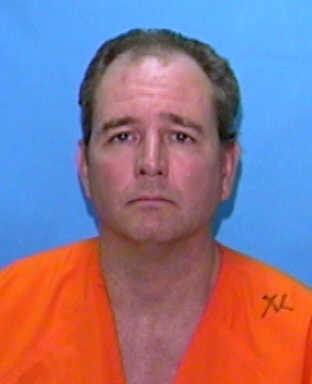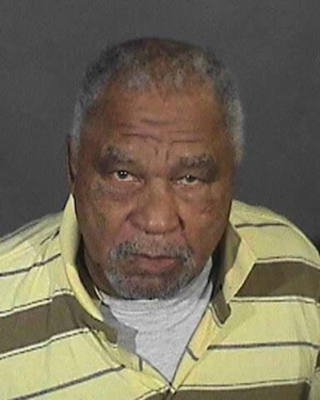Related Research Articles

Danny Harold Rolling, known as The Gainesville Ripper, was an American serial killer who murdered five college students in Gainesville, Florida over four days in August 1990.

Henry Lee Lucas, also known as the Confession Killer, was an American convicted murderer. Lucas was convicted of murdering his mother in 1960 and two others in 1983. He rose to infamy as a claimed serial killer while incarcerated for these crimes when he falsely confessed to approximately 600 other murders to Texas Rangers and other law enforcement officials. Many unsolved cases were closed based on the confessions and the murders officially attributed to Lucas. He was convicted of murdering eleven people and condemned to death for a single case with a then-unidentified victim, later identified as Debra Jackson.

Robert Yale Shulman was an American serial killer who murdered at least five young women in Hicksville, New York from 1991 to 1995. Convicted and sentenced to death for one of the murders and to life imprisonment for the others, his death sentence was later commuted to life imprisonment and he died in prison in 2006.

Richard Francis Cottingham is an American serial killer who was convicted in New York of six murders committed between 1972 and 1980 and convicted in New Jersey of twelve murders committed between 1967 and 1978. He was nicknamed by media as the Torso Killer and the Times Square Ripper, since some of the murders he was convicted of included mutilation.

Jack Owen Spillman III is an American rapist and serial killer from Spokane, Washington. He is known as the Werewolf Butcher.

Benjamin Thomas Atkins , also known as The Woodward Corridor Killer, was an American serial killer and rapist who murdered, tortured, and raped 11 women in Highland Park and Detroit, Michigan, during a period of eight months between December 1991 and August 1992. He was apprehended after being arrested for rape charges and soon after he confessed to the murders. He was ultimately found guilty and given several life sentences in April 1994. He died from AIDS in 1997.
Gilberto Antonio Chamba Jaramillo is an Ecuadorian serial killer, convicted of murdering nine people in Ecuador and Spain.

Harrison Frank "Marty" Graham is an American serial killer who murdered seven women in Philadelphia, Pennsylvania between mid-1986 to mid-1987, keeping their remains in his apartment. In 1988, he was found guilty on all charges and sentenced to death, but his sentences were later commuted to life imprisonment. Graham lived less than a mile and a half away from the home of another murderer, Gary M. Heidnik, who was also arrested during the same time period for similar crimes.

Samuel Little was an American serial killer of women who was convicted of eight murders and confessed to committing 93 murders between 1970 and 2005. The Federal Bureau of Investigation's Violent Criminal Apprehension Program has confirmed his involvement in at least 60 murders, the largest number of confirmed victims for any serial killer in American history. Little provided sketches for twenty-six of his victims although not all have been linked to known murders.
Abdelkader Salhi, known as The 10 Killer, is a Moroccan-German serial killer who murdered at least two prostitutes in Spain between August and September 2011, after having been released from a murder conviction in Germany. He was convicted of the latter murders and sentenced to 45 years imprisonment, but was acquitted in the murder of another woman.
The Rzeszowski family homicides occurred on 14 August 2011 in Saint Helier, Jersey in the Channel Islands. Damian Rzeszowski stabbed to death six people including four members of his family. He was found guilty of manslaughter with diminished responsibility and sentenced to 30 years in prison for each victim. He died in a suspected suicide in HMP Full Sutton on 31 March 2018.
Mark Alan Smith is an American serial killer who killed at least four women in Illinois and Arkansas during the 1960s, and was sentenced to 500 years' imprisonment for three of the deaths. Smith later confessed to killing eight women while stationed as a soldier in West Germany, for which he was never prosecuted, and authorities believe he could be involved in other murders, both in the US and overseas.
Donald Murphy is an American suspected serial killer, sex offender and bank robber, convicted of murdering two prostitutes in Detroit in 1980. During this time, several similar murders occurred in the city, presumably committed by two or more killers operating in the area, with Murphy himself confessing to committing at least six of them. However, he was convicted of only two with the available evidence, and sentenced to 15–30 years imprisonment for each murder.
Alexander Viktorovich Zhizhich and Viktor Viktorovich Zhizhich are Belarusian-Russian serial killers of Polish descent who murdered three people in the Vologda Oblast between January and October 2003. Alexander Zhizhich committed two additional murders in Arkhangelsk. The brothers were found guilty after trial, with Alexander receiving a life sentence and Viktor sentenced to 23 years imprisonment.
Hua Ruizhuo was a Chinese serial killer responsible for the murders of 14 prostitutes in Beijing's Chaoyang District between 1998 and June 2001. He would subsequently be executed for these crimes in 2002.
Cory Deonn Morris, known as The Crackhead Killer, is an American serial killer and necrophile who killed at least five women at his trailer in Phoenix, Arizona, over a period of eight months from 2002 to 2003. Morris was convicted of the five murders and sentenced to death.
The Storyville Slayer is the nickname given to an American serial killer who murdered at least 12 prostitutes in New Orleans, Louisiana. Through the course of the investigation, two separate suspects were considered, one of whom was convicted of one murder, leading investigators to believe that multiple killers are responsible.
James Jerold Koedatich is an American serial killer who kidnapped and murdered two young women within a two-week span in Morris County, New Jersey, in late 1982. Following his arrest, he was tried, convicted, and sentenced to death, but was resentenced to life in prison in 1990. Prior to the murders, Koedatich murdered his roommate in Florida, for which he served eleven years in prison, and while in prison he killed his cellmate, but that was ruled to be self-defense.

Carl Millard Patton Jr. was an American serial killer who committed five murders across Georgia from 1973 to 1977 with multiple accomplices. Via DNA testing in 2003, he was arrested for the murders, subsequently pleading guilty and given a life sentence.
Jeremy Bryan Jones is an American murderer and self-confessed serial killer. Convicted and sentenced to death for murdering a woman in Mobile, Alabama, in 2004, Jones later confessed to murdering 20 additional people in four other states before recanting. He has never been charged in any other murders, and the credibility of some of his confessions is considered dubious.
References
- 1 2 3 4 5 6 7 8 9 10 Pistorius, Micki (2012). "Brydone Brandt". Strangers On The Street - Serial homicide in South Africa. Penguin Random House. ISBN 9780143527176.
- 1 2 Labuschagne, Gerard (March 2007). "Foreign Object Insertion in Sexual Homicide Cases: An Exploratory Study". Department of Social Work and Criminology at the University of Pretoria. Archived from the original on 16 April 2023 – via University of Pretoria.
- 1 2 Choon, Heng; Adjorlolo, Samuel (2021). Crime, Mental Health and the Criminal Justice System in Africa: A Psycho-Criminological Perspective. Springer Nature. p. 127. ISBN 9783030710248.